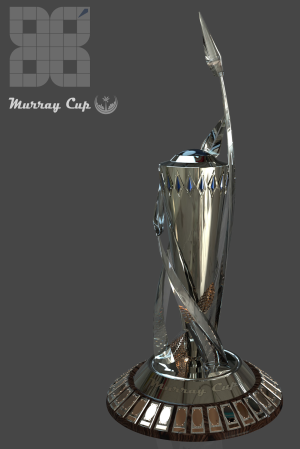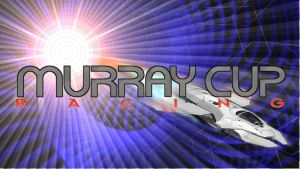
The Murray Cup is the unquestioned jewel in star racing's triple crown. Every year, top racing teams pour blood, sweat and money into attempting to take the top ranking in the challenging system-wide race.[1]
The Race
The Murray Cup is divided into two race types: Classic (once colloquially called Hare) and Blitz (formerly Tortoise, or Div- T). Classic racing is exactly what would be expected: ships trying to out-navigate each other as quickly as possible. Blitz takes into effect ships' weaponry, allowing pilots (with increasing restrictions over the years) to engage in limited combat during the race to disable, but not destroy, competitors. Though most pilots tend to specialize in one racing type or the other, to really become successful in the Murray Cup, it is important to master both skillsets. Racers will train for years to improve their 'off style,' with only a few exemplary pilots every becoming truly 'ambidextrous.'
History
The Murray Cup tradition began in the 埃利斯星系 circa 2467. Racing became a system pastime around leftover terraforming equipment, creating rugged and challenging courses.
Amon Murray, a criminal and gambler, began setting up legitimate betting systems and races; even offering small credit purses to winners of the intersystem races, personally named the Murray Cup. The first official race concluded with Ian Rikkord as the 2947 champion.
Since the first unofficial race, over 500 centuries of organized races have taken places each year, featuring hugely customized stock spacecraft and racers from all over the 地球联合帝国 [1]
Rule revisions and Controversies

The Murray Cup has featured its fair share of controversies, including serious injuries and deaths on the race track. The death of racing ace Zach Hugh due to an amateur's loss of control led to a year of rule changes and qualification requirements to improve safety and tighten regulations. Payloads on weapons were reduced for Blitz to focus more on racing than fighting, and a points system was implemented for the Murray Cup qualifications.[2]
References

